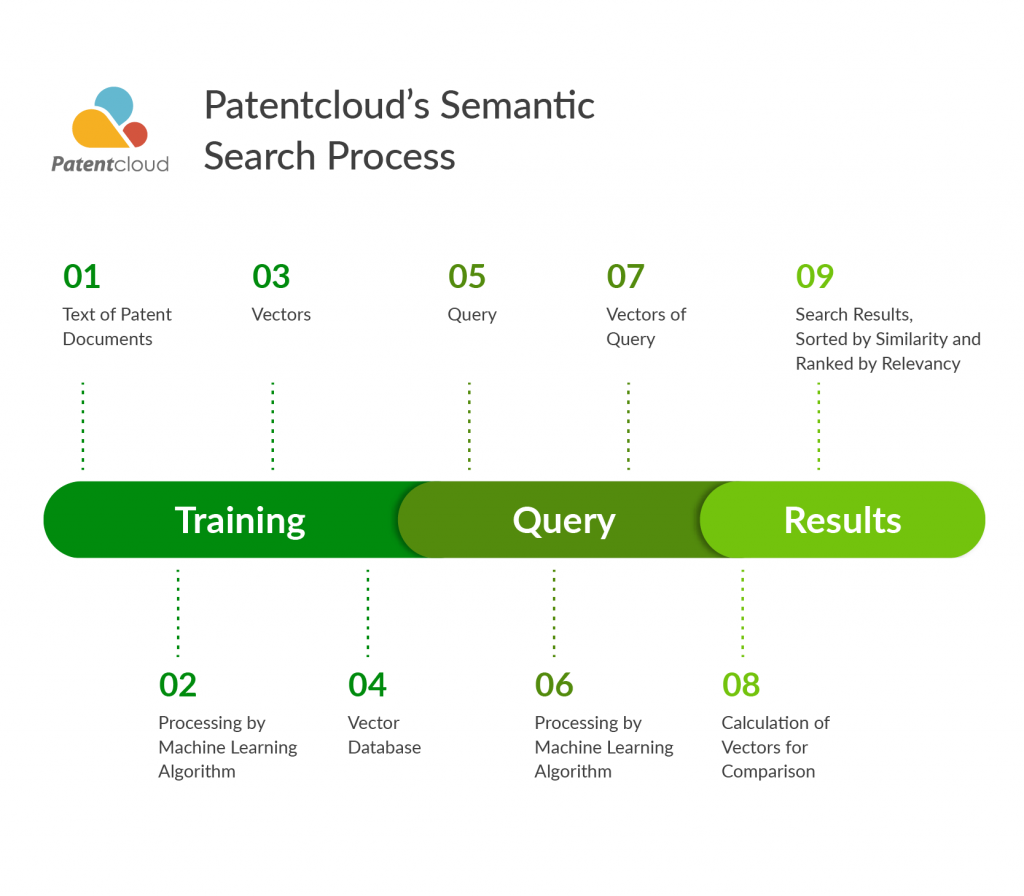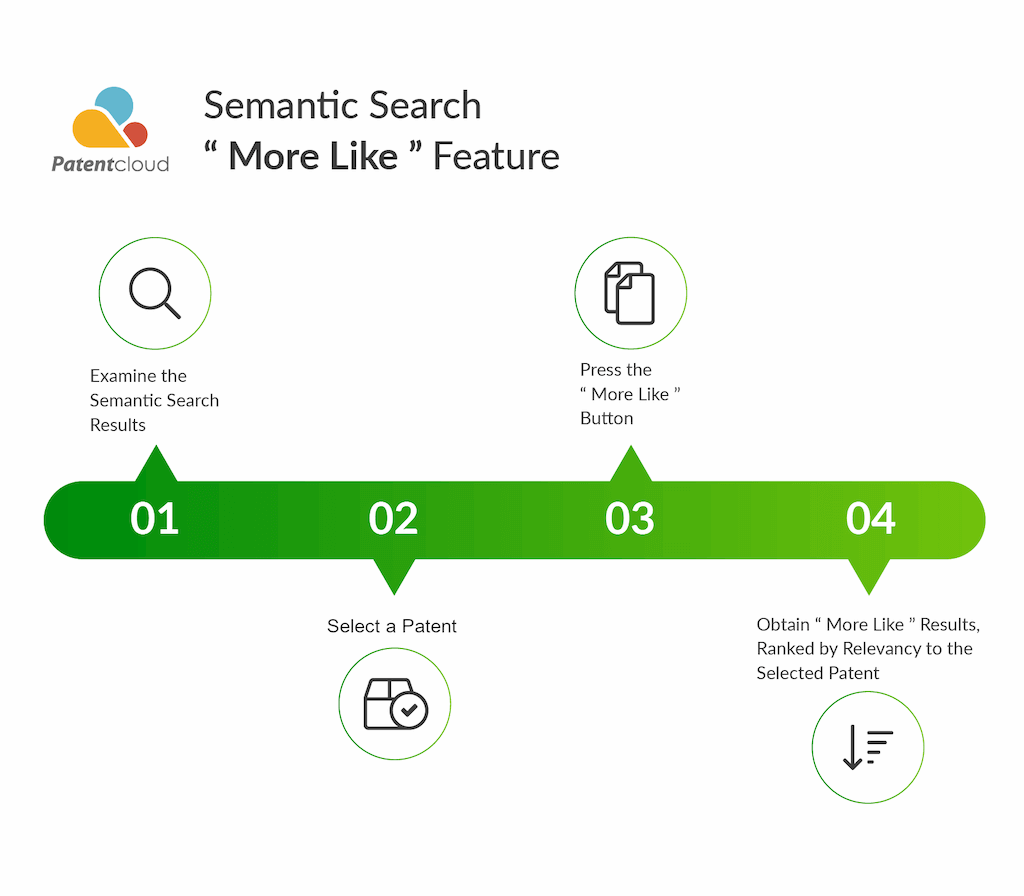Going Beyond Keyword Searches
In a perfect world, conducting a patent search would be easy. You would simply type in the keywords you wanted, based on your extensive experience in a specific field, and you would then immediately and easily get the exact results you wanted.
We all know that this is never the case in real life. In fact, relying on keywords in your patent search can end up being time-consuming and often frustrating.
What’s worse, certain concepts may have several different names. What is a cell phone in one description, for example, may be a mobile phone, mobile telephone, cellphone, portable phone, digital telephone, field telephone, satellite telephone, wireless telephone, or even handset in other descriptions.
In the end, you may end up missing out on relevant patents, which could impact your work drastically.
What Is Semantic Search?
Here is where another type of search comes in—semantic search.
Semantic search is a kind of patent search that delivers results based on keyword concepts, not exact keyword matches. In other words, semantic search focuses on the meaning and similarity in semantic content instead of keyword matching.
Because a semantic search excels at uncovering hidden connections and revealing similar concepts to the input criteria, it is ideal for broader, more concept-based searching.
With an emphasis on meaning (and not keywords), a semantic search delivers relevant patents, based on similarity.
When Should You Use Semantic Search?
A semantic search is especially useful for broader, more conceptual searches as well as for surveys of the patent landscape. In many cases, it is much faster than a keyword search.
It is also helpful for general patent searches since the wording used for certain items in patent documents can be quite different. Sometimes, the wording in a patent document may have even been intentionally written in a vague or unclear manner. Fortunately, with the right semantic search tool, this hidden information can be found quickly.
A semantic search is also effective in a variety of other patent searches, including patentability, invalidation, and state-of-the-art.
It must also be said that a semantic search can be useful when there is a lack of domain know-how or industry knowledge. Whereas a keyword search must rely on exact terms, a semantic search takes a broader approach and can deliver effective, relevant results, even when the starting point is a more general query.
Natural Language Search for Highly Relevant Results with Patentcloud
Knowing the limitations of keyword searching and eager to capitalize on the latest in machine-learning technology, the engineers and patent professionals at InQuartik have developed a very powerful Semantic Search feature that elevates users’ patent search capabilities, enabling them to go beyond keyword searches.
In fact, with Patentcloud’s Semantic Search, you no longer have to type in specific keywords at all, if you don’t want to—you can simply select specific patent claims and copy them into the Semantic Search box.
Or copy the abstract, summary, or disclosure of the invention into Semantic Search.
Or type in a query employing your own search terms, using natural language (not keywords), and simply hit enter.
Within seconds, Patentcloud’s Semantic Search delivers a list of highly relevant results, ranked according to their relevance.
A Closer Look Under the Hood of the Semantic Search Process

To better understand how Patentcloud’s Semantic Search works, let’s begin with the fact that Patentcloud has an extensive library of millions of patent documents, from patent offices that include the US, China, Japan, Europe, WIPO, and Korea.
During the Semantic Search’s pre-processing phase, this entire library is converted into vectors (converting words, sentences, or documents into vectors simply means changing them into real numbers, which then can be compared to the user’s query).
So, when a user makes a query using Semantic Search, the content in the query is processed in Patentcloud’s proprietary machine learning model, where the query itself is converted into vectors. This means that this content also becomes a representation in real numbers, with the occurrence of words as vectors and the context in which they occur of considerable importance.
Next, these vectors are used to calculate the similarity to Patentcloud’s entire patent document database, with the context, location, and frequency of the vectors playing key roles. From here, the patents with the highest similarity are selected and presented in the search results, with the most relevant results presented first.
All of this is completed in just seconds.
Unlike other vendors, Patentcloud’s machine learning model is trained and optimized exclusively on patent data, and this library is regularly updated with the latest patent documents. Perhaps even more importantly, as more patent data is fed into Patentcloud’s predictive model, this model becomes even more accurate.
This is how Patentcloud’s Semantic Search is able to find the patent documents that are most relevant to a user’s search—by using semantic similarity via a proprietary algorithm instead of simply matching keywords.
Not All Semantic Searches Are Equal

Of course, other vendors in the patent search field also tout their own semantic search features.
However, it must be noted that not all of them are using machine learning technology. In fact, some still rely on Latent Semantic Indexing, an increasingly antiquated technology that was developed years ago. Others are not able to make their entire database semantically searchable, while still others outsource their semantic search work to outside suppliers.
In sharp contrast, Patentcloud’s Semantic Search utilizes the latest in machine learning technology, including neural network learning algorithms, with a database of millions of patent documents that is entirely searchable. Patentcloud’s Semantic Search has also been developed entirely in-house by a team of leading data scientists, engineers, and patent professionals.
In addition, Patentcloud’s Semantic Search features a “More Like” feature, which sets it even further apart from other vendors.
This exclusive, powerful feature is easy to use. After making an initial query with Semantic Search, you can focus your search even further by selecting a patent from the results and pressing the “More Like” icon. This re-ranks the results based on similarity to the selected patent, with the “More Like” results ranked and listed by relevancy to the selected patent.
This is important for several reasons. First, the “More Like” feature accelerates the search process by focusing on a user-selected patent and then quickly finding patents that are relevant to it. This makes the search process more efficient, especially if there are a large number of patents that must be read through.
And unlike other vendors, who replace the original query in their functions, Patentcloud’s “More Like” feature retains the user’s original query and utilizes it to find patents that are highly relevant to the user-selected patent.
Seeing the Forest for the Trees
Unless you are a very experienced patent searcher with extensive knowledge in a specific field, it can be very easy to get lost amongst the “trees” of all the exact queries required by a keyword search.
With Patentcloud’s Semantic Search, you can simply use natural language and quickly and easily see the big picture, including hidden connections, with a listing of highly relevant results.
In other words, Parencloud’s Semantic Search enables you to see the entire forest and not just individual “keyword” trees when it comes to your patent searches.
To find out about the power of Semantic Search, click here for a free 7-day trial.

